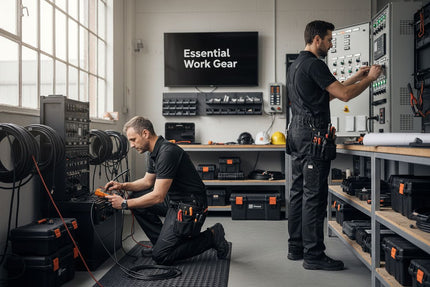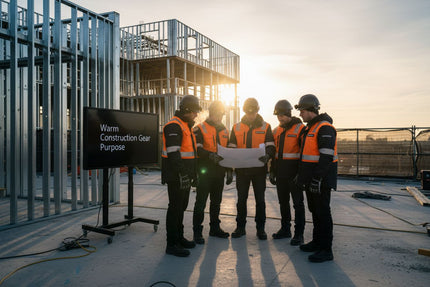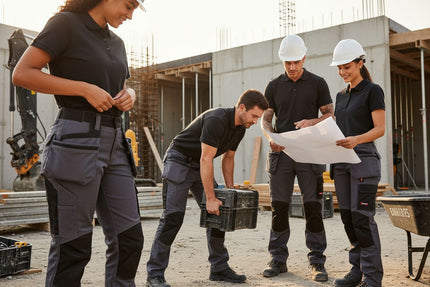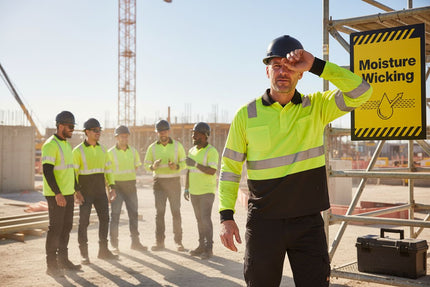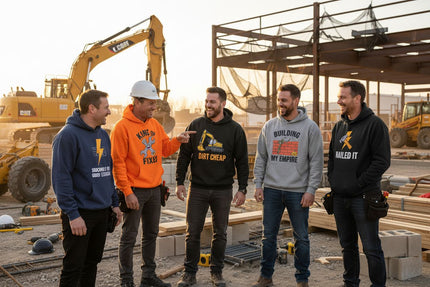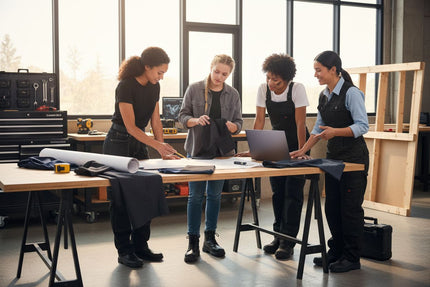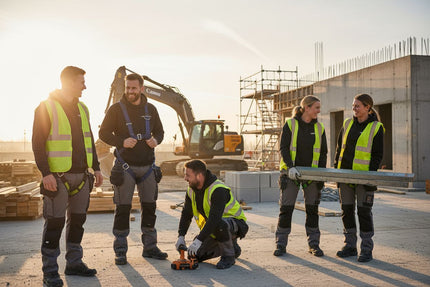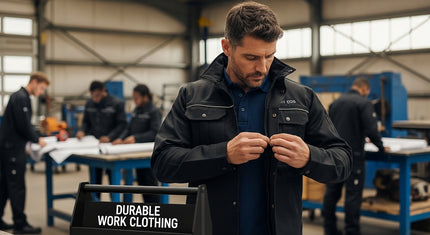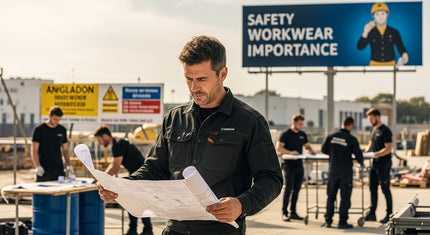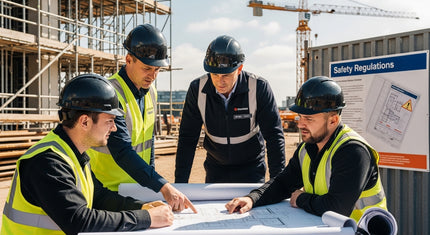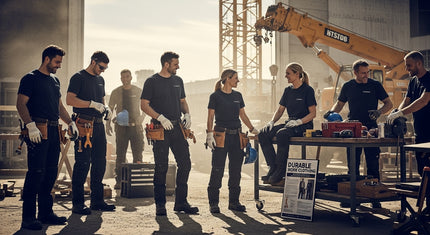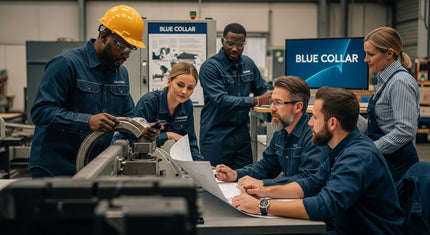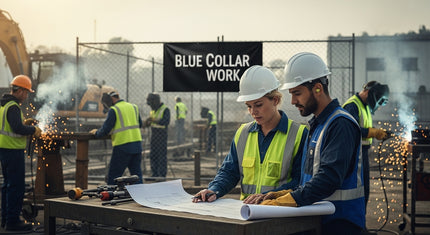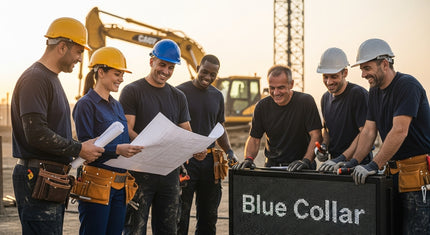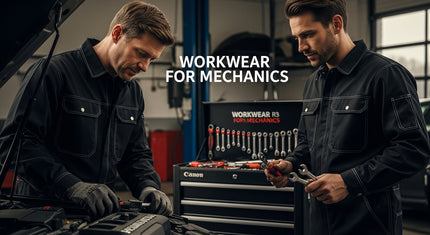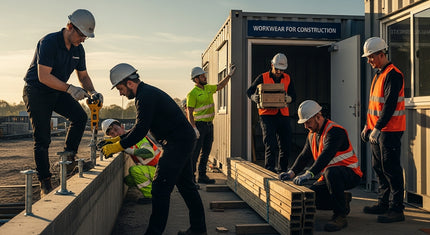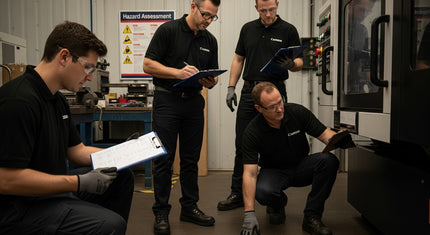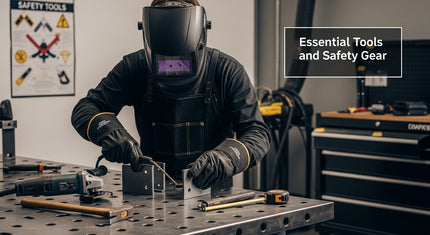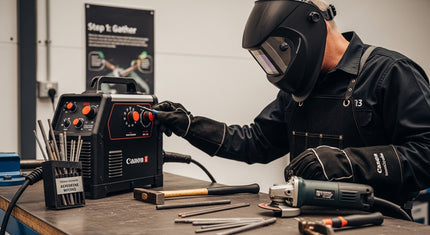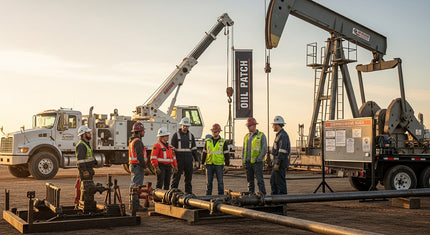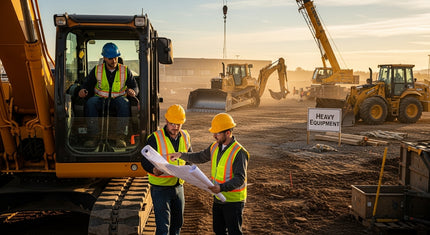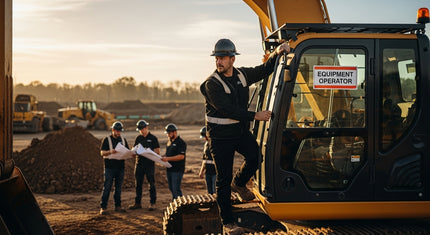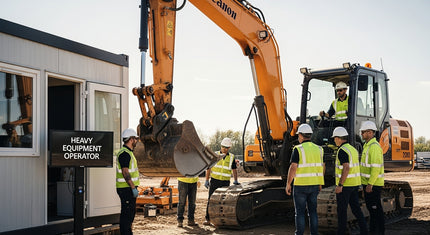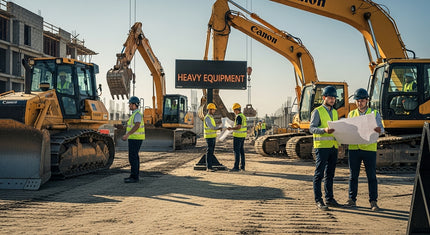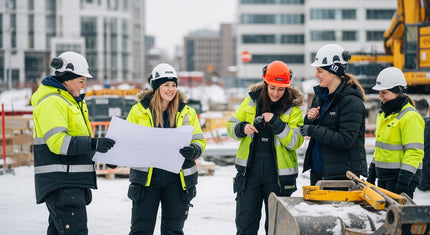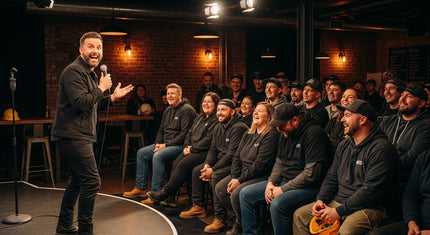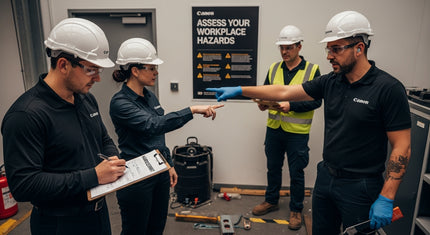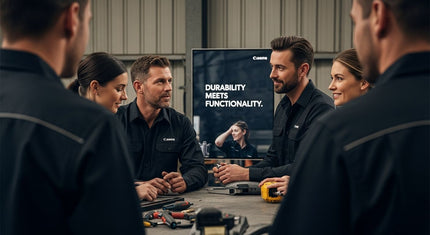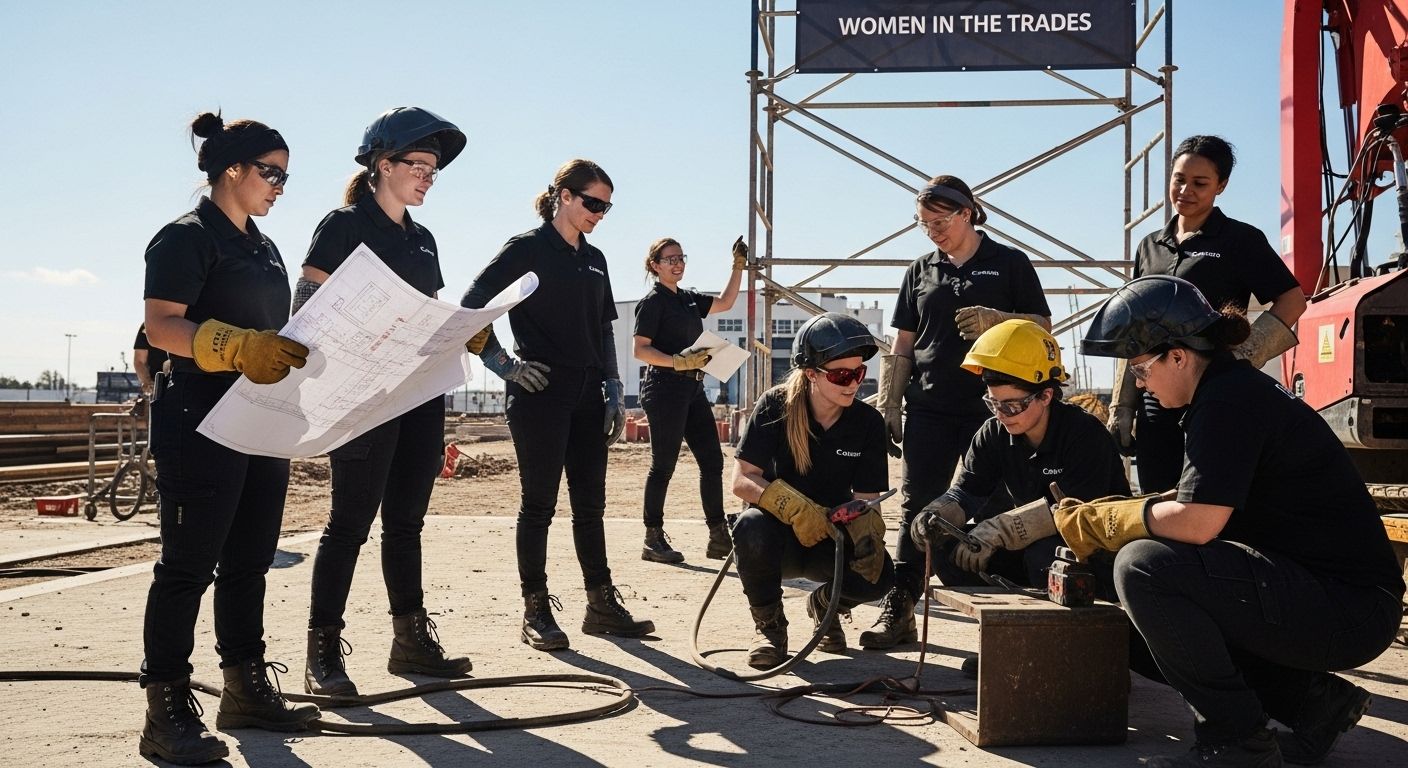
Women are stepping into the skilled trades in bigger numbers than ever before, signaling a dramatic shift in fields once seen as off-limits. You might think progress would creep along, but the truth is women have driven a 32.1 percent jump in trade jobs held by women over just five years. The surprise? This surge is not just about filling gaps. It’s about rewriting the rules and setting the stage for a whole new future in durable workwear and powerful careers.
Table of Contents
- Rising Numbers Of Women In The Trades
- Essential Workwear And Gear For Women
- Top Careers And Success Stories
- Breaking Barriers And Building Futures
Quick Summary
| Takeaway | Explanation |
|---|---|
| Women are reshaping blue-collar careers | More women are entering trades, demanding a cultural shift in the workforce and challenging stereotypes. |
| Gender diversity enhances workplace dynamics | Diverse teams yield better results, and employers recognize the value of women’s contributions in various trades. |
| Specialized workwear is essential for safety | Modern workwear design must focus on women’s anatomical needs, ensuring comfort and protection while working. |
| Successful mentorship programs are crucial | Access to mentorship and educational resources empowers women to thrive in trade professions and build successful careers. |
| Strategic initiatives aim for future growth | Programs like ‘Million Women in Construction’ focus on increasing women’s presence in the trades over the next decade. |
Rising Numbers of Women in the Trades
The landscape of trades is undergoing a powerful transformation, with women increasingly challenging traditional workforce boundaries and rewriting the narrative of blue-collar careers. In recent years, women have been steadily breaking into industries once considered exclusively male domains, bringing fresh perspectives, exceptional skills, and undeniable determination.
Breaking Barriers in Construction and Skilled Trades
According to the U.S. Bureau of Labor Statistics, women currently represent 6.7% of construction and extraction occupations. While this percentage might seem small, it represents significant progress. The U.S. Department of Commerce’s ‘Million Women in Construction’ initiative aims to double the number of women in construction over the next decade, signaling a robust commitment to gender diversity.
The growth is not just about numbers. Women are proving themselves as skilled professionals across various trades including welding, electrical work, plumbing, carpentry, and automotive repair. Their entry is challenging long-standing stereotypes and demonstrating that technical skills know no gender.
Economic and Professional Opportunities
Recent employment data reveals an encouraging trend. Construction employment has seen growth, with women accounting for approximately 1 in 7 new jobs in the sector. This steady increase indicates not just employment opportunities, but a fundamental shift in workplace culture and perception.
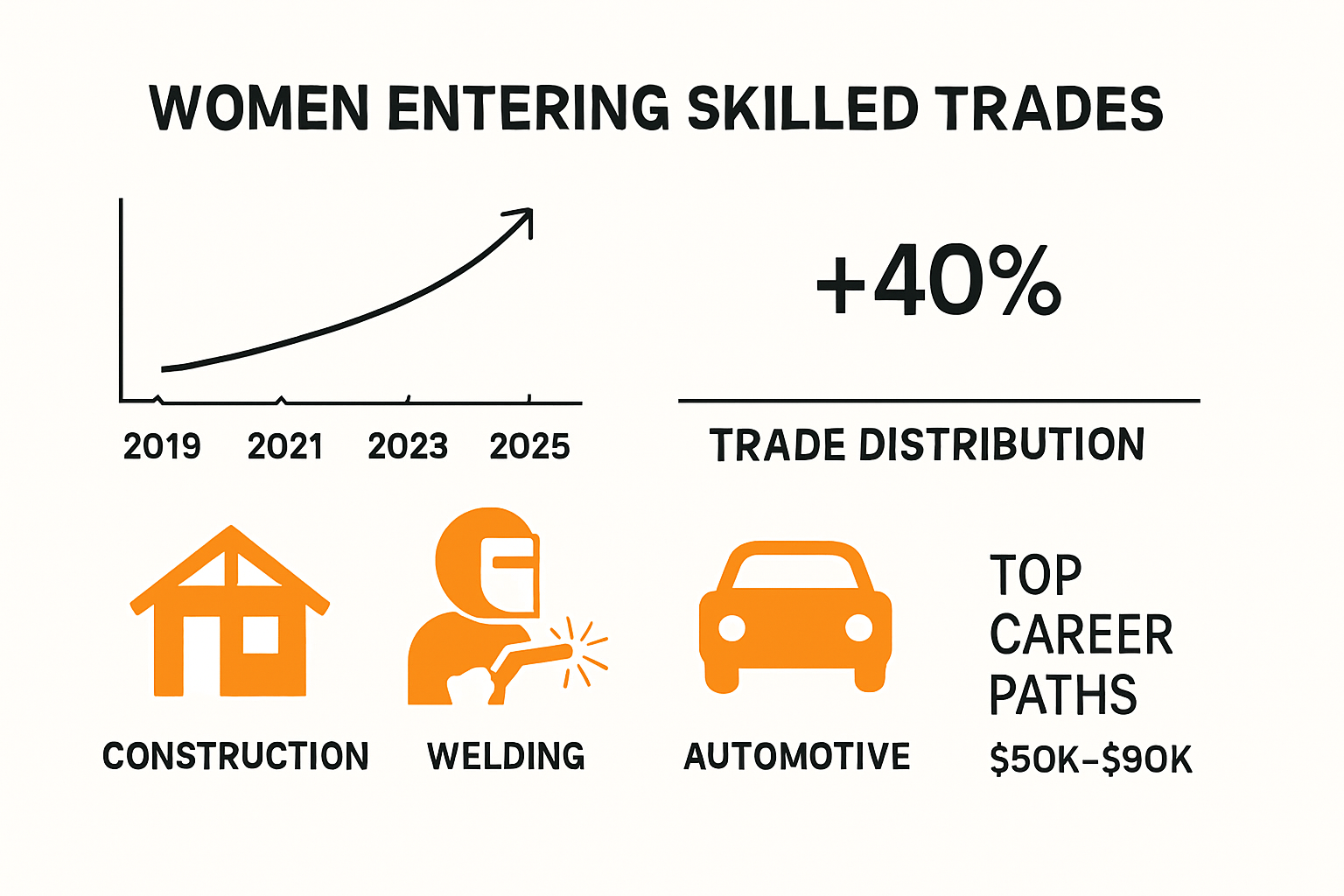
The reasons for this shift are multifaceted. Enhanced educational opportunities, targeted workforce development programs, and increasing awareness about gender equality have created more accessible pathways for women to enter trades. Employers are also recognizing the value of diverse teams, understanding that skills and talent are not determined by gender.
Moreover, trades offer competitive salaries, job security, and opportunities for entrepreneurship that are particularly attractive to women seeking stable and rewarding careers. Learn more about workwear designed specifically for women in challenging professions.
The narrative is clear: women in trades are not just participants but leaders, innovators, and game-changers. They are redefining what it means to work in traditionally male-dominated fields, bringing strength, precision, and a unique perspective that enriches entire industries. As barriers continue to fall, the future of trades looks increasingly diverse, inclusive, and exciting.
Essential Workwear and Gear for Women
Workwear for women in trades is no longer a one-size-fits-all afterthought. It has evolved into a sophisticated intersection of functionality, safety, and personal expression. The modern female tradesperson demands gear that not only protects and performs but also acknowledges her unique physical needs and professional aspirations.
Beyond Standard Issue: Designing for Female Functionality
Traditional workwear has long been designed with male body types as the default standard. Research from the National Center for Construction Education and Research emphasizes the critical importance of well-fitted, durable workwear that supports productivity and ensures safety. This means reimagining everything from work pants to safety gear with women’s specific anatomical requirements in mind.
Key design considerations include strategic pocket placement, adjustable waistbands, stretch fabrics that allow full range of motion, and cut lines that accommodate different body shapes. Women need workwear that moves with them, not against them, whether climbing ladders, operating machinery, or working in tight spaces.
Here is a summary table highlighting the key features and benefits of modern workwear designed specifically for women in trades:
| Feature | Why It’s Important | Example Benefit |
|---|---|---|
| Strategic Pocket Placement | Allows access to tools while considering body proportions | Increased productivity on site |
| Adjustable Waistbands | Improves fit and comfort | Suitability for various body types |
| Stretch Fabrics | Enables a full range of motion | Comfort during movement-intensive tasks |
| Gender-Specific Cut Lines | Accommodates different body shapes | Reduces chafing and fit issues |
| Reinforced Knees & Impact Protection | Enhances safety and gear durability | Less frequent workwear replacement |
| Female-Fit Safety Shoes | Provides proper support and fit | Reduces risk of foot injuries |
Safety and Performance: More Than Just Appearance
The National Association of Women in Construction highlights that proper workwear is a critical safety component. This goes beyond aesthetic considerations to include protective elements like reinforced knees, impact-resistant materials, thermal regulation, and compatibility with personal protective equipment.
Safety shoes present a particular challenge. Traditionally designed for male feet, they often lack proper support and fit for women. Modern workwear brands are now developing shoes with narrower heels, different arch support, and sizing that genuinely accommodates female foot anatomy. These innovations ensure that women can focus on their work without discomfort or increased injury risk.
Technological Innovations in Women’s Workwear
Today’s workwear for women integrates cutting-edge technologies. Moisture-wicking fabrics, UPF sun protection, and smart textile designs that regulate body temperature are becoming standard. Check out our comprehensive guide to modern workwear innovations that are transforming how professionals approach their on-site attire.
Moreover, workwear is increasingly becoming a statement of professional identity. Brands are offering customization options, varied color palettes, and designs that celebrate the strength and diversity of women in trades. This shift recognizes that workwear is not just about protection, but about empowerment and professional pride.
The future of women’s workwear is about understanding that true functionality means designing with, not just for, female tradespeople. It’s a holistic approach that considers physical needs, safety requirements, and the powerful spirit of women who are reshaping industries one well-fitted work shirt at a time.
Top Careers and Success Stories
The trades are no longer just a career path—they’re a landscape of extraordinary opportunities for women who dare to challenge traditional boundaries. Each year, more women are discovering that skilled trades offer not just jobs, but dynamic, lucrative, and deeply satisfying professional journeys.
Trailblazing Careers Across Diverse Trades
Women are making remarkable strides across multiple trade sectors, demonstrating exceptional skill and innovation. Electrical work, once considered an exclusively male domain, now welcomes talented women who are rewiring not just circuits, but industry perceptions. Welding offers another compelling career path, where precision, technical expertise, and artistic skill converge. Automotive technology has also seen a significant influx of female professionals who are proving that mechanical aptitude knows no gender.
According to the Bureau of Labor Statistics, some of the most promising trade careers for women include:
- Electrical and electronics installers and repairers
- Plumbers and pipefitters
- HVAC technicians
- Automotive service technicians
- Construction equipment operators
These careers offer median annual wages significantly higher than many traditional female-dominated professions, with some specialties earning over $60,000 annually.
The following table summarizes some top trade careers for women and their key advantages as discussed above:
| Trade Career | Example Roles | Noteworthy Advantages |
|---|---|---|
| Electrical & Electronics Installer | Electrician, Technician | High pay, skill shortages |
| Plumbers & Pipefitters | Plumber, Pipefitter | Good job security, steady demand |
| HVAC Technician | Installer, Repair Tech | Essential industry, stable income |
| Automotive Service Technician | Mechanic, Diagnostic Tech | Evolving with new tech, varied workplaces |
| Construction Equipment Operator | Crane Operator, Loader | High earning potential, visible impact |
| Welder | Structural Welder, Fabricator | Technical/artistic blend, job variety |
Breaking Barriers and Building Legacies
Success stories are powerful testimonials of individual determination. Take Jennifer Rodriguez, a master electrician who started as an apprentice and now owns her own electrical contracting business. Or Sarah Thompson, a crane operator who has become a leading voice in workplace safety training. These women represent more than individual achievements—they are systemic change agents.
Research from the National Women’s Law Center indicates that women who enter trades not only earn competitive salaries but also report higher job satisfaction compared to many other professional sectors. The combination of hands-on work, continuous learning, and tangible results creates a uniquely rewarding professional experience.
Education and Support: Pathways to Success
Successful women in trades often credit specialized training programs, apprenticeships, and supportive mentorship networks. Organizations like Women in Trades provide critical resources including scholarship opportunities, mentorship programs, and professional development workshops.
Industry-specific certifications have become increasingly accessible, with many community colleges and technical schools offering targeted programs designed to support women entering these fields. Scholarships, apprenticeship programs, and targeted recruitment initiatives are dismantling historical barriers.
The narrative is clear: trades are no longer just a career—they’re a platform for women to build extraordinary professional legacies. From constructing skyscrapers to maintaining complex industrial systems, women are not just participating in trades—they are redefining them. Explore our comprehensive guide to launching a successful trade career and discover the incredible opportunities waiting to be seized.
These careers offer more than employment. They provide a canvas for creativity, technical mastery, and personal empowerment. For women ready to pick up a wrench, operate heavy machinery, or design complex systems, the trades represent a world of unlimited potential.
Breaking Barriers and Building Futures
The journey of women in trades is not just about entering male-dominated industries—it’s about fundamentally transforming workplace culture, challenging systemic barriers, and creating sustainable pathways for future generations of female professionals.
Confronting Historical Challenges
Research from the Institute for Women’s Policy Research reveals a stark reality. While women now constitute over 314,000 workers in trade occupations—representing a 32.1% increase over five years—they still represent only 3.9% of workers using tools in construction. This statistic underscores the persistent challenges of discrimination, limited training opportunities, and deeply ingrained workplace biases.
These barriers are multifaceted. Women frequently encounter sexual harassment, unequal mentorship opportunities, and workplace environments that were historically designed exclusively for male workers. Overcoming these challenges requires more than individual resilience—it demands systemic transformation.
Institutional Support and Transformation
The U.S. Department of Commerce’s ‘Million Women in Construction’ initiative represents a significant step toward meaningful change. This ambitious program aims to double women’s representation in construction over the next decade, focusing on comprehensive strategies for recruitment, training, hiring, and retention.
Key institutional approaches include:
- Developing targeted apprenticeship programs
- Creating mentorship networks
- Implementing zero-tolerance policies for workplace harassment
- Offering scholarships and financial support for technical education
- Designing inclusive workplace policies
Creating Sustainable Pathways
Breaking barriers is not just about individual success—it’s about creating sustainable ecosystems that support women’s long-term professional growth. This means reimagining workplace cultures, developing comprehensive support systems, and challenging deeply rooted stereotypes about women’s capabilities in technical fields.
Educational institutions, trade schools, and industry leaders are increasingly recognizing that diversity is not just a moral imperative but a strategic advantage. Learn more about professional development opportunities for women in trades.
The future of trades is collaborative, inclusive, and dynamic. By breaking down historical barriers, women are not just entering these professions—they are fundamentally reshaping them. Each woman who picks up a tool, learns a trade, and excels in her profession is writing a new narrative of professional empowerment, one that promises broader opportunities for generations to come.
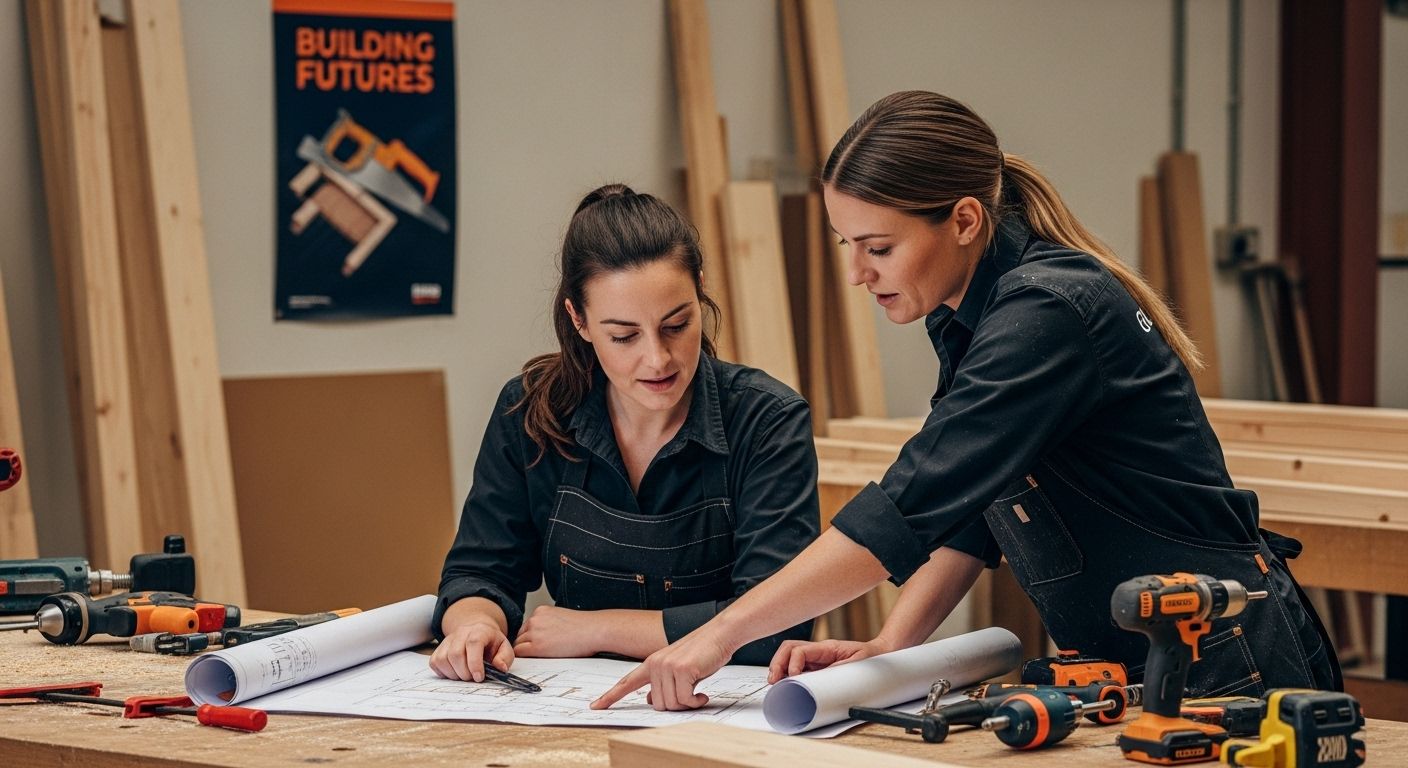
Frequently Asked Questions
What types of workwear are best for women in trades?
Modern workwear for women in trades should include features like well-fitted clothing, strategic pocket placement, adjustable waistbands, and stretch fabrics to ensure comfort and mobility. Safety shoes designed specifically for women’s feet are also crucial for preventing injury and enhancing performance.
How does gender-specific workwear enhance safety for women in trades?
Gender-specific workwear is designed to accommodate women’s anatomical needs, which can improve fit and reduce discomfort. Enhanced safety features such as reinforced knees and impact-resistant materials are tailored to protect women from workplace hazards effectively.
What advancements are being made in women’s workwear technology?
Today’s women’s workwear often incorporates technological improvements such as moisture-wicking materials, UPF sun protection, and smart textiles that adjust to body temperature. These innovations enhance both comfort and safety, making it easier for women to perform their jobs efficiently.
Why is it important for women in trades to have access to mentorship programs?
Mentorship programs provide critical support, guidance, and networking opportunities for women entering trades. They help women navigate the challenges of traditionally male-dominated fields, fostering professional growth and encouraging career advancement.
Ready for Work That Fits You Perfectly?
You have seen how important it is for women in the trades to have workwear that truly matches their needs. The article highlights the frustration with ill-fitting gear, the desire for real safety features, and the need to feel confident and respected on the job. Standard clothing does not deliver. You deserve apparel designed for strength, movement, and a bold attitude. Browse Badass Women’s Clothing for options built around your body and your goals.
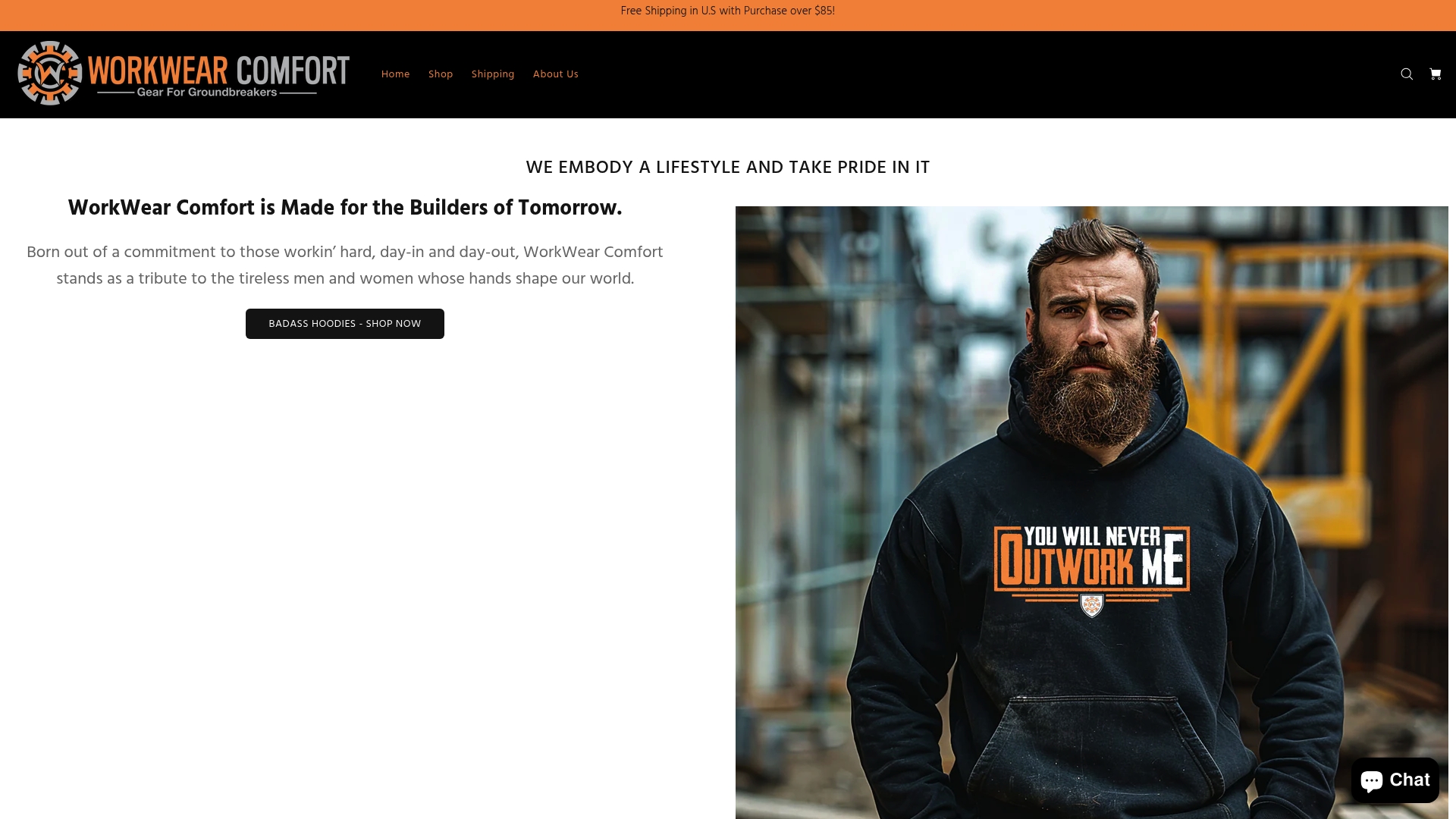
Join the movement of women who demand performance and style every single day. Shop with Workwear Comfort to find clothing that empowers you to break barriers and own your trade with pride. Make your next shift the one where comfort and confidence meet. Explore our full selection now and experience the difference.
Recommended
- Best Affordable Workwear Brands for Tough Jobs 2025 - WorkWear Comfort
- What Is Workwear? A 2025 Guide for Hardworking Professionals - WorkWear Comfort
- Best Workwear for Electricians: Top Choices for 2025 - WorkWear Comfort
- Best Workwear for Hot Weather: Stay Cool & Protected in 2025 - WorkWear Comfort

